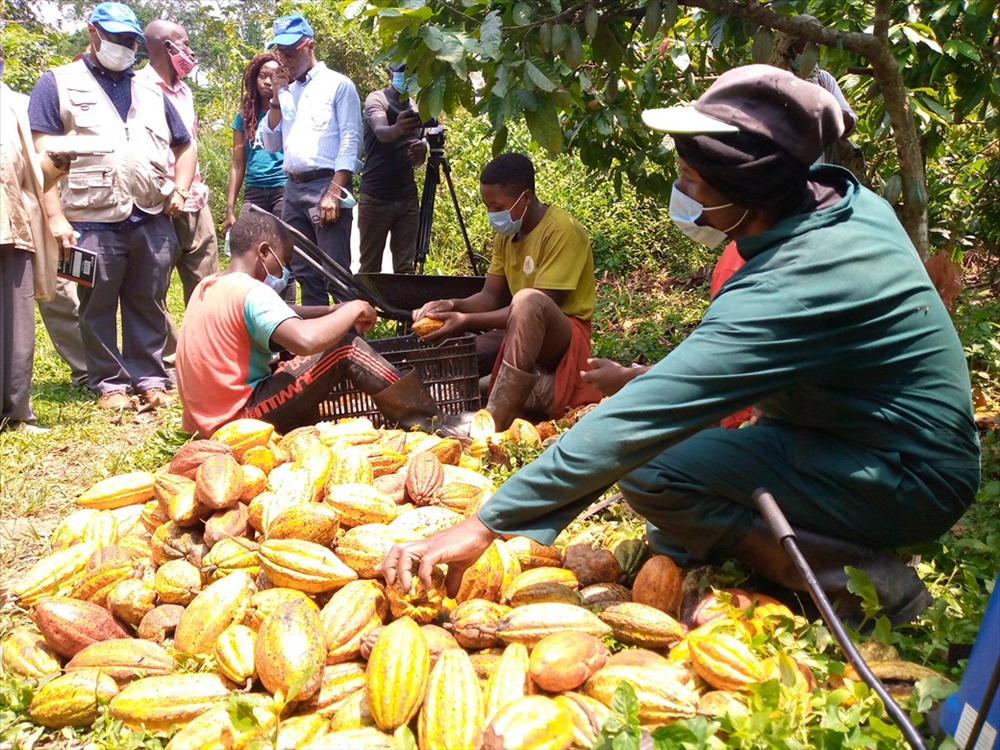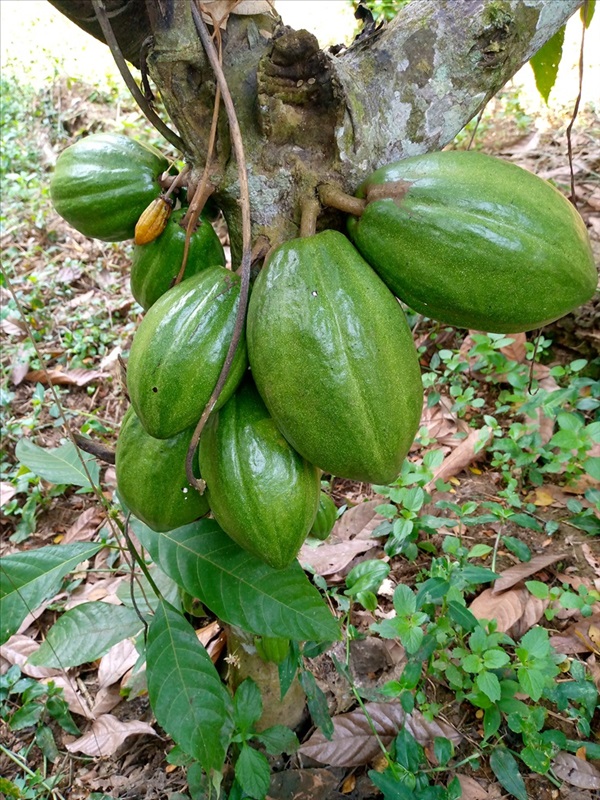By Umar Nsubuga
Vicent Kakande works day and night every day to attend to his cocoa plantation in Buwama, Mpigi district.
Five and half years ago, Kakande used to despise cultivation in favour of coffee growing. But today, the cocoa plantation, sitting on six acres is his major means of livelihood.
High returns realised
In a month, Kakanda sells 100kgs of cocoa, each kilo at sh5,500 because of Covid-19, but before he used to sell at sh6,000.
Consequently, he quit rearing many goats and growing coffee to concentrate on cocoa farming.

He says cocoa has virtually replaced their indigenous traditional coffee.
The farm-gate price of a kilo is sh5,000-sh6,000.
Kakande, who is one of the farmer leaders in the area, says the prices go up to sh7,000 during times of scarcity.
He is one of the hundreds of cocoa farmers in the area, who earns a living from the crop.
On a good day, Kakande can earn as much as sh500,000.
According to Rose Bugendage, an agricultural leader in Buwama, farmers have been able to realise high profits from their cocoa gardens because the soils are fertile and favour the crop.
Teamwork is key to success
Bugendage says farmers have formed groups and drafted strict regulations governing them.

“In Munyonyo village, for example, farmers have by-laws guiding them. A farmer who fails to adhere to them is fined,’’ she notes.
The farmers grow cocoa under the supervision of the main buyer, sunshine Agro Products which is under Asante Mama Company. The farmers have also formed their own savings and credit co-operative societies.
The farmers also ensure that all farmers apply the new farming methods such as pruning and pest fighting while adhering to the advice given by sunshine group officials.
These officials also provide seedlings to those who are just starting.
Bugendage says farmers monitor themselves and evaluate the productivity of their cocoa to ensure progress.
She adds that through their groups, they have learnt how to market their cocoa and set uniform prices to avoid exploitation.
Mark Ssewungu, a field officer with Sunshine agro products says the farmers fight cocoa diseases as a group.
“When we taught the farmers how to cut and bury the affected plants, they would do it as a group in their gardens because they are near each other,” Ssewungu says.
He reveals that the farmers in Buwama earn about sh500,000 in a month from cocoa sales on average.
Pamela Anyoti, the founding partner of Sunshine Agro Products and Owner and CEO of Asante Mama, attributes the farmers’ success to the field officers from sunshine who monitor and offer advice to farmers on the best practices.
She says the groups formed by farmers act as a bargaining tool.
“There is competition among farmers’ groups and the farmers themselves.
This has encouraged many to produce more good cocoa so as to get more money.’’
Ssewungu notes that team groups have helped the farmers get money to access chemicals required to fight banana diseases.
How to grow cocoa
Cocoa is one of the oldest cash crops in Uganda.
It is propagated by seeds and when mature, cocoa reaches over eight feet high and bears yellowish-red pods from the base of the stem upwards.
Amaranado, Upper Amazon and Prinitario are the common varieties grown in Uganda.
Amaranado originated from Brazil and has a blunt bottom; Amazon has a sharp bottom, while Prinitario has red pods. A plant can last between 70 and 100 years.
Cocoa farming is a business that requires one to have ample land. However, it can be intercropped before the trees are five feet tall.
Anyoti explains that cocoa is not friendly to open spaces and does well in trees, thus it is an agroforestry crop.
He says self-mulching is one of the advantages of cocoa growing.
“It’s leaves drop and form a mulching coat and one may take around six months without weeding,” Anyoti explains.
From planting to harvest, cocoa can take three to four years to bear pods and eventual harvesting.
Each tree, according to Anyoti, yields every month, enabling he farmer to harvest all-year round.
“Cocoa is unique. One can harvest twice a month unlike coffee, which has only two harvests a year,” he says.
Challenges
The fact that cocoa is edible exposes it to attack from squirrels, monkeys and baboons.
Like other crops, cocoa is attacked by pests and diseases, which cause swellings and patches on the stems.
The affected plants are cut down and burnt. Such attacks affect yields by over 60%.





